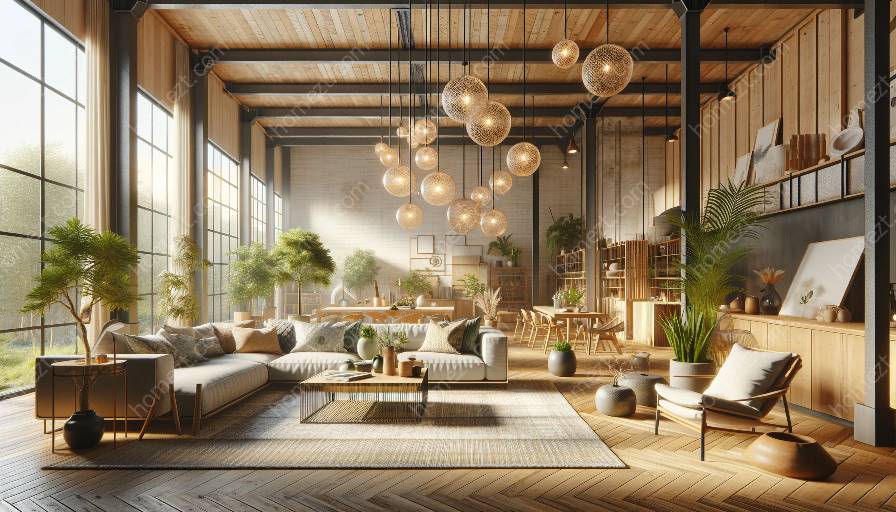Interior design is about more than just creating beautiful spaces. It also involves making sustainable and eco-friendly design choices. Balancing aesthetics and sustainability is not only possible, but it's also essential for creating spaces that are both visually stunning and environmentally conscious.
The Intersection of Sustainability and Aesthetics
When it comes to interior design, the intersection of sustainability and aesthetics is a harmonious one. Sustainable design focuses on minimizing the environmental impact of a space while also promoting the well-being of its inhabitants. Aesthetics, on the other hand, revolve around the visual appeal and beauty of a space. Blending these two elements successfully involves thoughtful and intentional decision-making at every stage of the design process.
Practical Tips for Balancing Aesthetics and Sustainability
1. Use Eco-Friendly Materials: Selecting sustainable materials, such as reclaimed wood, bamboo, cork, and recycled glass, can add a unique and eco-friendly touch to any interior space. Not only do these materials contribute to a more sustainable environment, but they also lend a distinct aesthetic appeal.
2. Embrace Natural Lighting: Incorporating natural lighting into the design can significantly impact the aesthetic and sustainability of a space. Large windows, skylights, and strategically placed openings can enhance the visual appeal of a room while reducing the need for artificial lighting, thus conserving energy.
3. Choose Low-VOC Paints and Finishes: Volatile organic compounds (VOCs) are harmful to both human health and the environment. Opting for low-VOC or VOC-free paints and finishes not only reduces indoor air pollution but also contributes to creating a healthier and more sustainable interior environment.
4. Integrate Indoor Plants: Incorporating indoor plants not only enhances the visual aesthetics of a space but also contributes to improved indoor air quality and overall well-being. Plants play a crucial role in sustainable design by purifying the air, reducing carbon dioxide levels, and adding a natural and vibrant touch to interior spaces.
Creating a Sustainable and Eco-Friendly Atmosphere
When striving to create a sustainable and eco-friendly interior, it's essential to consider the holistic impact of design decisions on the environment, occupants, and the overall aesthetic of the space. By implementing sustainable practices consciously, interior designers can sculpt vibrant, visually appealing, and environmentally responsible spaces that effectively balance aesthetics and sustainability.
Styling with Sustainable Design in Mind
Embracing sustainable interior design doesn't mean compromising on style. In fact, it opens up opportunities for innovative and unique design choices that contribute to a visually captivating and eco-friendly space. When styling with sustainable design in mind, there are several key considerations to keep in focus.
Key Considerations for Styling with Sustainable Design
1. Upcycling and Repurposing: Incorporating upcycled or repurposed furniture and decor items not only adds character to a space but also aligns with sustainable principles by reducing waste and promoting resource efficiency.
2. Artisan and Handcrafted Pieces: Investing in artisan and handcrafted pieces supports traditional craftsmanship, promotes fair trade, and adds an element of uniqueness to the interior aesthetic. These items often tell a story and add a personal touch to the design.
3. Vintage and Antique Finds: Adding vintage or antique elements to a space can infuse character and timelessness into the design. It also aligns with sustainability by giving new life to existing pieces and reducing the demand for newly manufactured items.
4. Eco-Friendly Textiles: Choosing sustainable and eco-friendly textiles, such as organic cotton, hemp, and linen, for upholstery and soft furnishings is a mindful way to enhance the visual and tactile appeal of a space while supporting ethical and sustainable practices within the textile industry.
Striking the Perfect Balance
By incorporating these considerations into the styling process, interior designers can achieve a harmonious balance between aesthetics and sustainability. The result is a space that not only captivates the eye but also champions eco-conscious living and sustainable design principles.


























